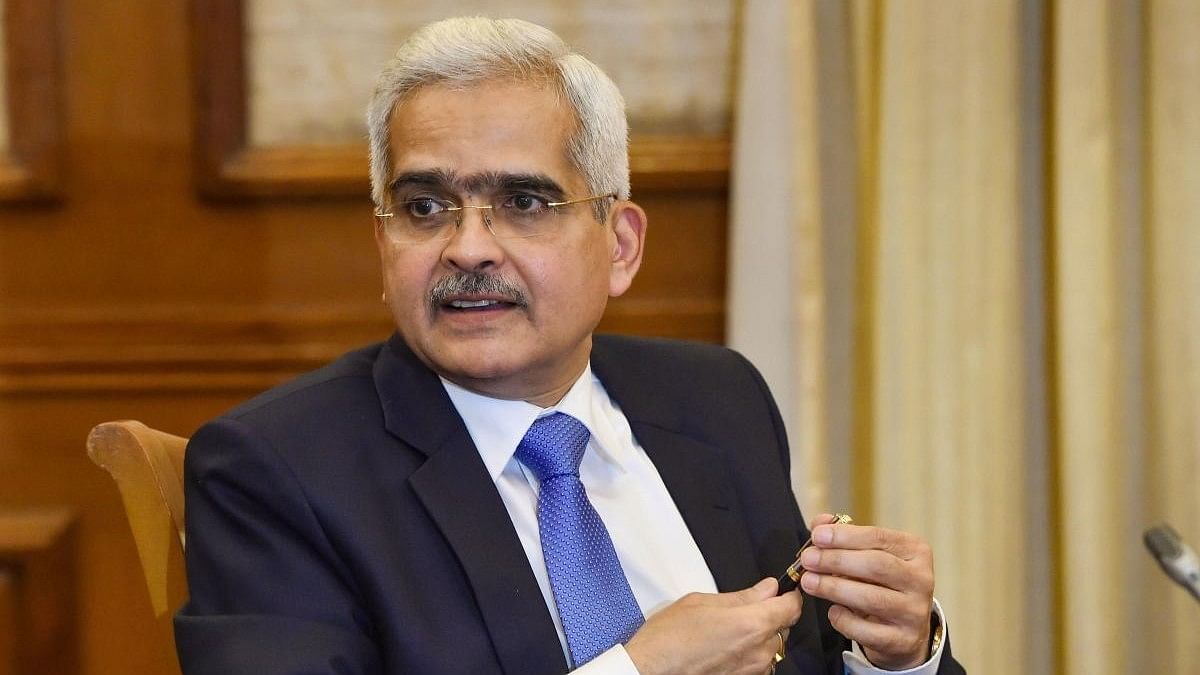
RBI Governor Shaktikanta Das.
Credit: PTI Photo
New Delhi: The Reserve Bank of India’s Monetary Policy Committee on Thursday decided to keep key policy interest rates unchanged for the sixth time in a row and affirmed commitment to bring down retail inflation to 4 per cent in a sustainable manner.
Repo rate or the interest rate at which the RBI lends money to commercial banks will remain unchanged at 6.5 per cent. Consequently, the standing deposit facility (SDF) rate remains unchanged at 6.25 per cent and the marginal standing facility (MSF) rate and the Bank Rate at 6.75 per cent.
Commercial banks and other financial institutions take decisions on their lending and deposit rates based on these policy rates. The status quo on policy repo rate means the interest rates on retail as well as corporate borrowings would remain largely unchanged. Equated monthly installments (EMIs) on home, car and other loans will also remain unchanged.
The MPC also decided to remain focused on withdrawal of accommodation to ensure that inflation progressively aligns to the target, while supporting growth. Five out of the six members of the Monetary Policy Committee supported the move.
Besides, RBI Governor Shaktikanta Das, four other members of the MPC Shashanka Bhide, Ashima Goyal, Rajiv Ranjan and Michael Debabrata Patra voted to keep the policy repo rate unchanged at 6.50 per cent, while Jayanth R Varma voted to reduce the policy repo rate by 25 basis points.
Announcing the MPC decisions, Das reiterated the central bank’s commitment to bring down retail inflation to the target of 4 per cent in a sustainable manner.
“The inflation trajectory, going forward, would be shaped by the outlook on food inflation, about which there is considerable uncertainty,” the RBI Governor said.
The Consumer Price Index (CPI) based retail inflation has been above the central bank’s medium-term target of 4 per cent for more than four years. As per the latest data released by the National Statistical Office (NSO), retail inflation stood at 5.69 per cent in December, remaining above the 4 per cent target for 51 months in a row.
Upasna Bhardwaj, Chief Economist, Kotak Mahindra Bank, said the RBI's reiteration of bringing down inflation to 4 per cent target suggests that the central bank continues to remain cautious on inflation.
“The tight liquidity in the banking system may continue for some more time as the focus is on bringing inflation towards 4 per cent,” said Mukesh Kochar, national head of wealth at AUM Capital.
Interest rate sensitive sectors like real estate and auto have been pitching for easing in policy rates. Lower interest rates normally push demands for housing and cars. “With the reduction in policy rates would have been the best scenario for interest-sensitive sectors like the real estate sector, policy continuity is the next best outcome for both borrowers and developers alike,” said Pradeep Aggarwal, chairman of Signature Global.
"The sustained pause in the repo rate is poised to benefit India's economic trajectory positively," said Anu Aggarwal, head of corporate banking at Kotak Mahindra Bank.
The RBI has pegged retail inflation for the financial year 2024-25 at 4.5 per cent with Q1 at 5 per cent; Q2 at 4 per cent; Q3 at 4.6 per cent; and Q4 at 4.7 per cent.
The real GDP growth for 2024-25 is projected at 7 per cent with Q1 at 7.2 per cent; Q2 at 6.8 per cent; Q3 at 7.0 per cent; and Q4 at 6.9 per cent. In the current financial year the economic growth is projected to remain at 7.3 per cent.
Going forward, the momentum of economic activity witnessed during 2023-24 is expected to continue in the next year (2024-25). Agricultural activity is holding up well despite lower rainfall, lower reservoir levels and delayed sowing. Rabi sowing has surpassed last year’s level as well as the normal acreage. The allied sector is also expected to provide major support to agriculture with continued momentum in horticulture and fisheries, Das said.
Industrial activity is gaining steam on the back of improving the performance of manufacturing. The early results of corporates in the manufacturing sector remain upbeat, driven by higher profit margins. The Purchasing Managers’ Index (PMI) for manufacturing is displaying expansion along with strengthening of future activity index, the RBI Governor noted in his statement.